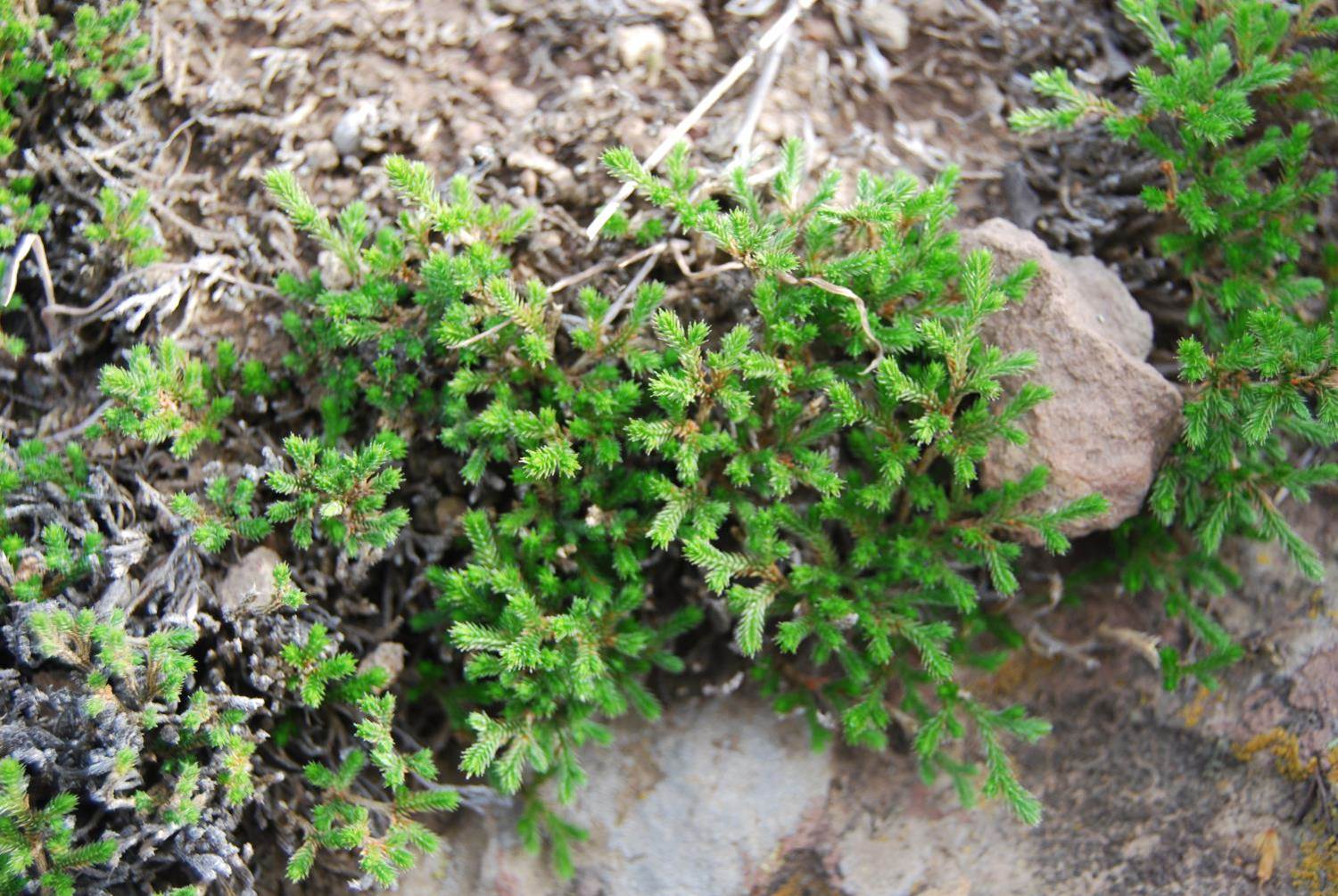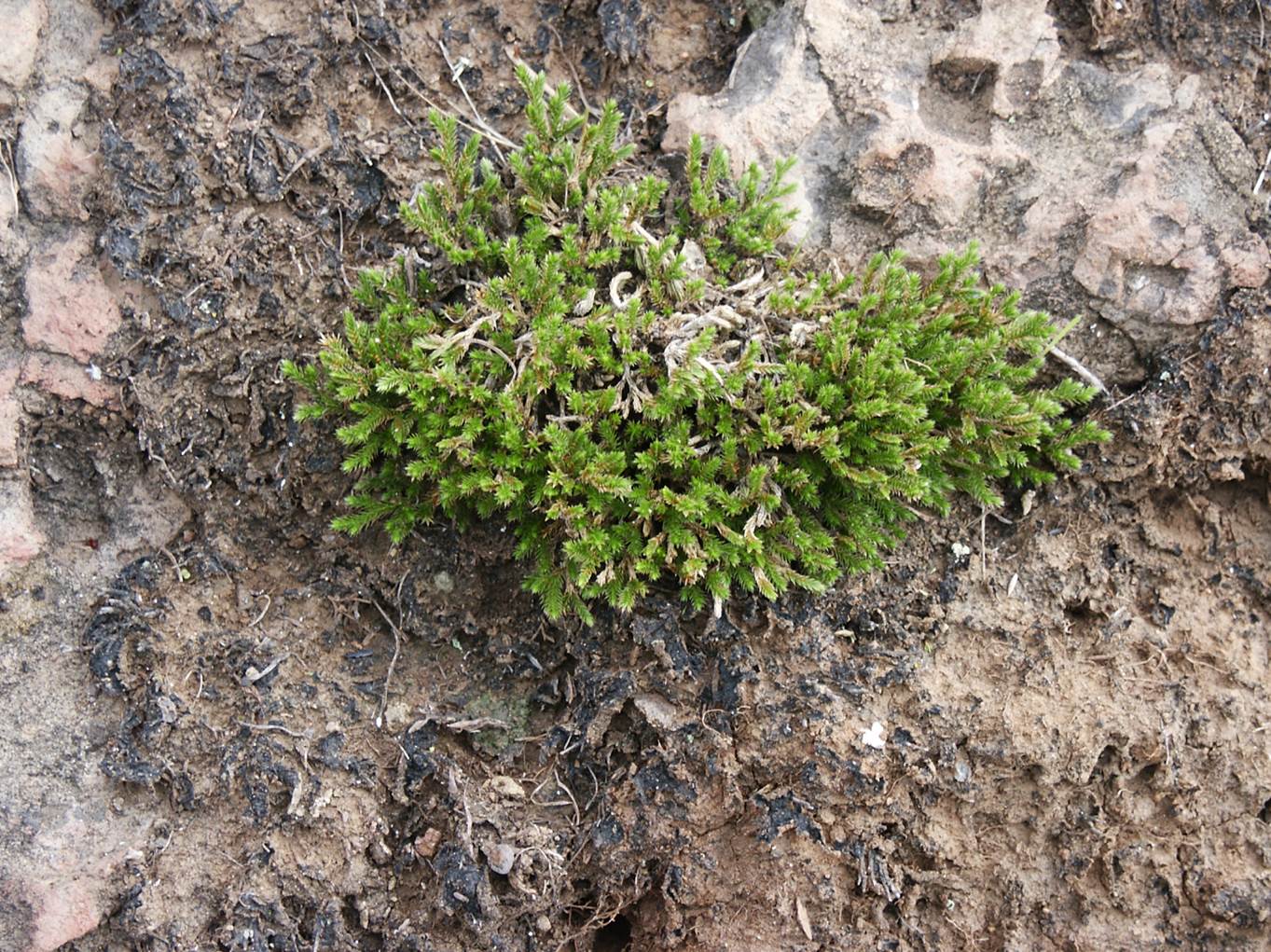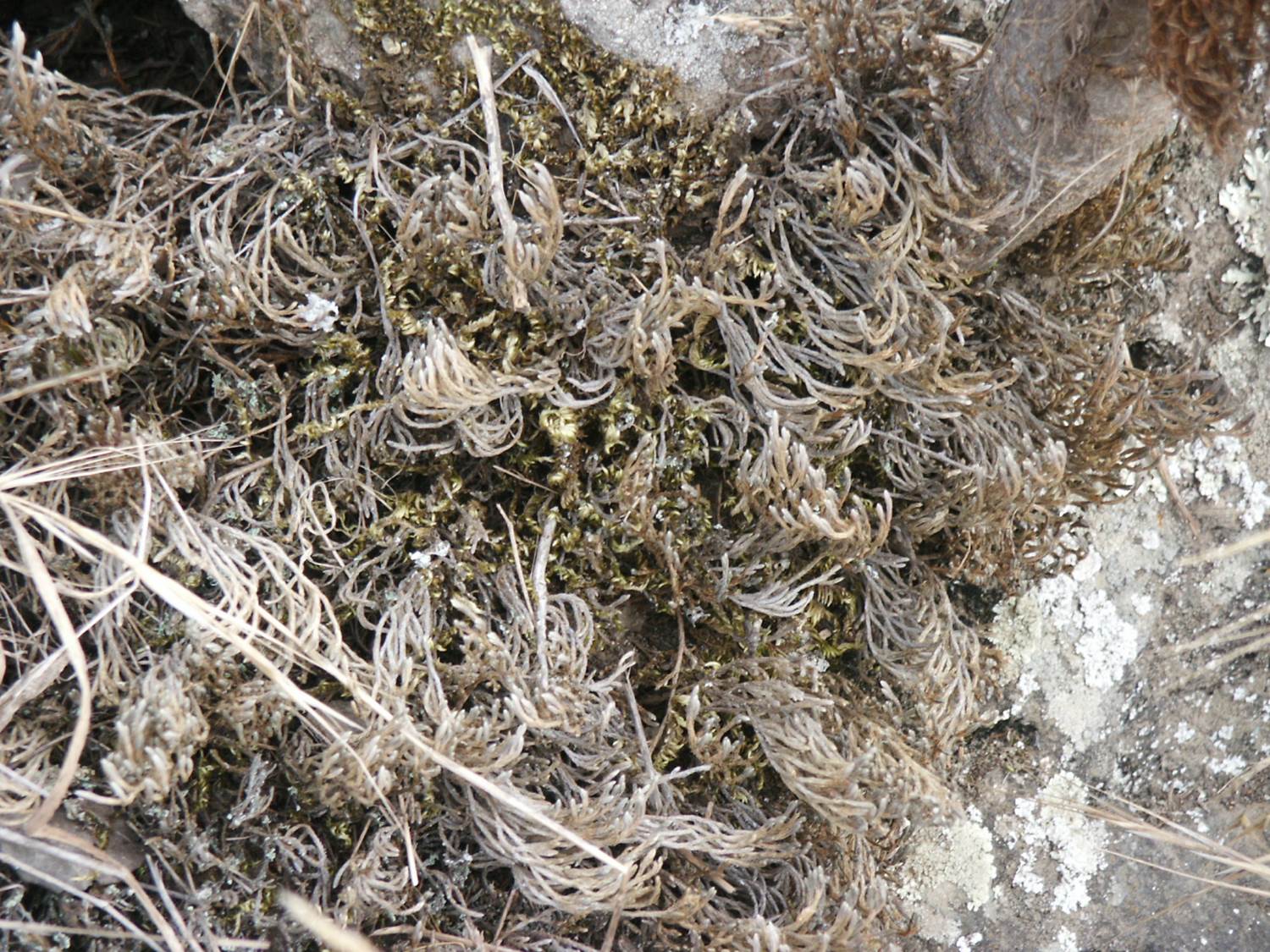Scientific Name
Selaginella bigelovii L. Underw.
Family
Selaginellaceae
Other Names
Club Moss
General
Club mosses (such as Selaginella) are not true mosses, but rather primitive vascular plants. They do not produce seeds. Many species dry out and appear dead during dry seasons, and then green up and rejuvenate with rainfall. Given their biology, some species are sold under the name "resurrection plant."
Selaginella grows directly from cracks and fissures in rocks, in thick tufts. Most of the year it appears brown and life-less, although after a good rainfall the plants are bright green.
CI
Around CI, this species is most commonly encountered on north facing slopes (on rocky surfaces), absent from the sun drenched and drier south facing slopes.
The tufts of Selaginella capture soil particles and retain moisture, and thus form important seed nurseries for other species that grow on the rock faces (such as Eriogonum crocatum, Dudleya blochmaniae and D. verityi). Such plants (and others) are often seen growing out of patches of Selaginella.
These plants are active off-and-on through Winter and Spring as moisture levels allow, and following drenching rain storms other times of the year.
References:
See this species on CalFlora.
The Jepson Manual (2012: 111, Selaginellaceae, by Paul Wilson and Thomas J. Rosatti).
McAuley (1996: 524).

Patch of green, growing Selaginella bigelovii growing from rock face on hillside above Malibu Hall, CI (29 January 2013).

Patch of Selaginella bigelovii growing from rock face in hillside to the south of University Glen, CI (15 November 2003). Note the dry, dormant Asterella californica encrusting the soil surrounding the Selaginella.

Selaginella bigelovii in its dry, dormant Summer condition, on hillside to the south of University Glen, CI (29 May 2003).
